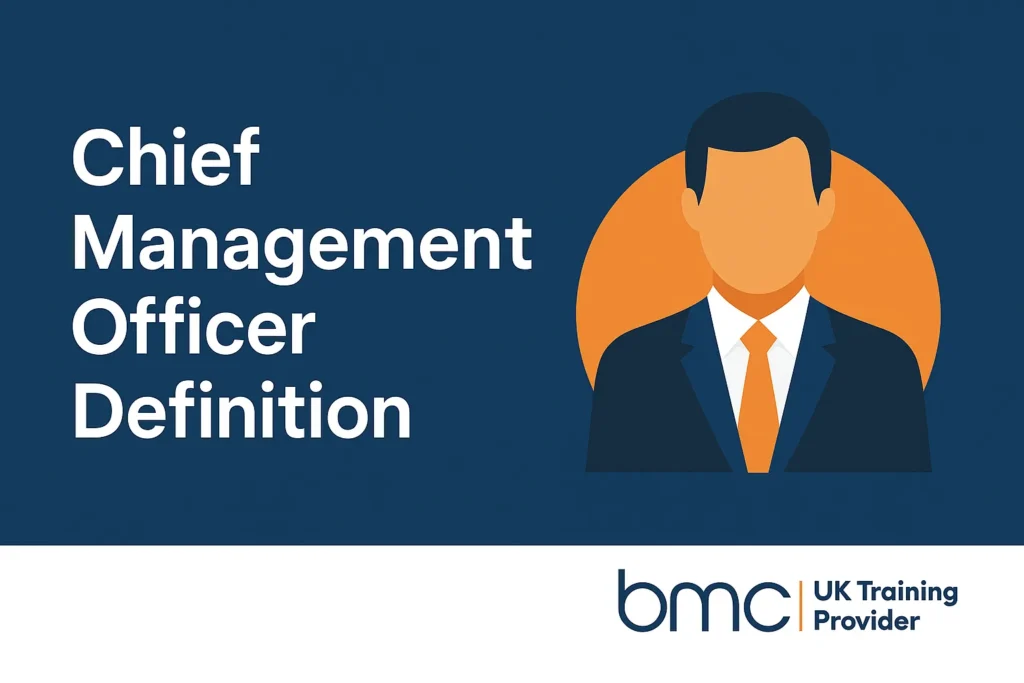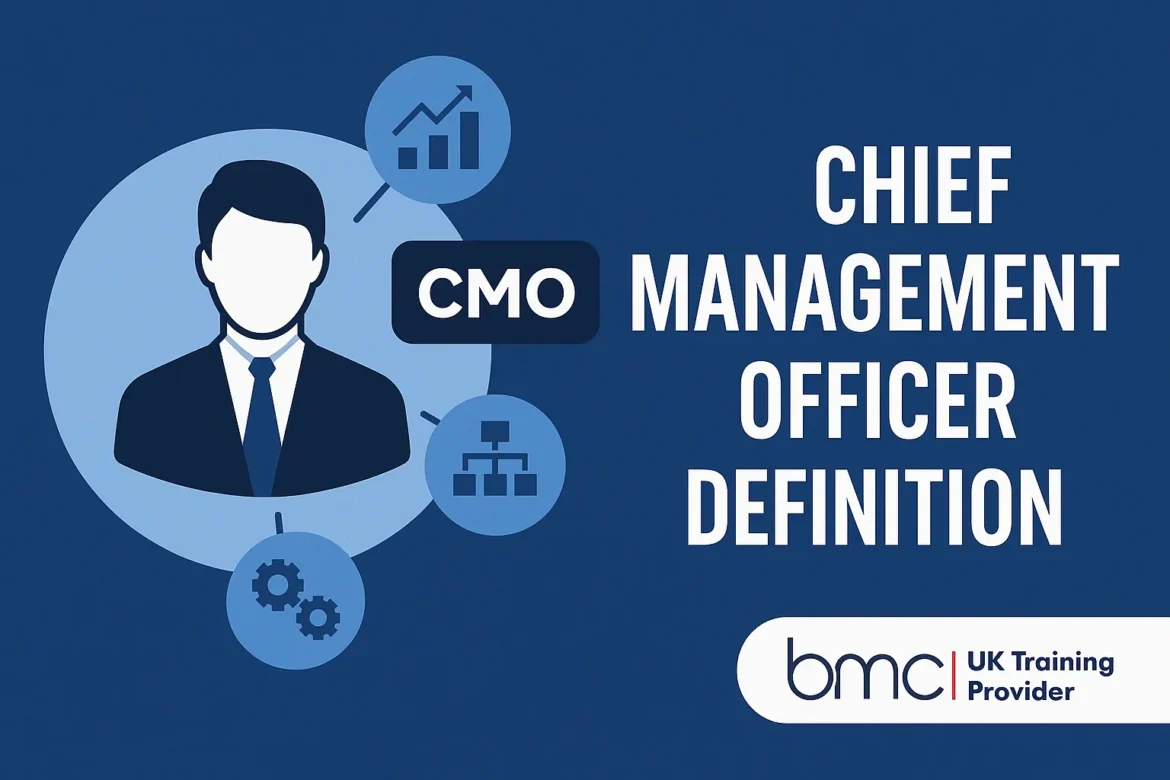Navigating the top tiers of corporate leadership can be complex. While roles like CEO, CFO, and COO are widely understood, the Chief Management Officer (CMO) is a position that is gaining increasing prominence. What exactly is a CMO, and why is this role becoming a linchpin for modern organizations? This comprehensive guide will not only define the Chief Management Officer but will also explore their critical function, responsibilities, and how they differ from other C-suite executives. By the end, you’ll have a clear understanding of whether a CMO is the right fit for your organization.
The Core: Chief Management Officer Definition
A Chief Management Officer (CMO) is a senior executive responsible for overseeing the overall operational efficiency and strategic management of an organization. Unlike the Chief Operating Officer (COO), who often focuses on daily, tactical operations, the CMO typically has a broader, more strategic mandate. Their primary goal is to ensure that all internal systems, processes, and resources are aligned with the company’s long-term vision and strategic goals.
Think of the CMO as the architect of the organization’s internal structure. They don’t just manage; they optimize, innovate, and integrate. They are the strategic counterpart to the CEO’s vision, translating high-level goals into actionable, efficient, and scalable operational frameworks.
Why Do Organizations Need a CMO?
The role of a CMO has evolved in response to the increasing complexity of modern business. Companies are no longer just dealing with one market; they are global, digital, and constantly in flux. This requires a specialized leader focused on internal excellence.
- Bridging the Gap: A CMO acts as a vital bridge between the strategic vision of the CEO and the day-to-day execution. They ensure that all departments are not working in silos but are instead collaborating effectively toward a unified objective.
- Operational Excellence: The CMO’s primary mandate is to drive operational efficiency. This includes optimizing workflows, implementing new technologies, and streamlining processes to reduce costs and improve productivity.
- Change Management: In a world of constant change, a CMO is a key player in managing organizational transitions. Whether it’s a merger, acquisition, or a major technological overhaul, the CMO ensures a smooth and effective transition.
Read Also : Assistant Restaurant Manager Job Description: A Comprehensive Guide

What Are the Core Responsibilities of a CMO?
The responsibilities of a CMO are multifaceted and can vary by industry and company size. However, they generally fall into a few key areas:
- Strategic Planning and Implementation: Working closely with the CEO and other C-suite members to develop and execute the company’s strategic plan.
- Operational Oversight: Managing and optimizing core business functions such as supply chain, IT, human resources, and finance.
- Performance Monitoring: Establishing and tracking key performance indicators (KPIs) to measure efficiency, productivity, and profitability.
- Risk Management: Identifying and mitigating operational risks to ensure business continuity and stability.
- Team Leadership: Leading and mentoring department heads to foster a culture of high performance and accountability.
You may also be interested in: Composite Risk Management Meaning: A Complete Guide for Modern Leaders
CMO vs. COO vs. CFO: Understanding the Key Differences
The CMO role is often confused with other C-suite positions, particularly the COO. While there is some overlap, their focus is distinct.
As seen in the table, the CMO operates at a higher, more holistic level than a typical COO. While a COO ensures the factory runs smoothly today, a CMO designs the future factory and ensures all parts are built to work together.
How to Become a Chief Management Officer
There is no single path to becoming a CMO, but a blend of specific skills and experiences is essential.
- Gain Diverse Operational Experience: A CMO needs a broad understanding of various business functions. Experience in different departments, from marketing to supply chain, is invaluable.
- Develop Strategic Acumen: Take on roles that require strategic planning, such as project management or business development.
- Master Change Management: Seek opportunities to lead major company initiatives or transformations.
- Acquire Advanced Education: An MBA or a Master’s degree in a related field can provide the theoretical knowledge needed for this high-level role.
When Is a CMO an Essential Hire?
Not every company needs a CMO. The role becomes critical in specific scenarios:
- Rapidly Scaling Businesses: When a startup is transitioning from a small team to a large organization, a CMO can help build the foundational infrastructure for sustainable growth.
- During a Major Transformation: A merger, acquisition, or significant shift in business model often requires a dedicated leader to manage the internal complexities.
- Complex, Multi-Divisional Organizations: Companies with multiple departments or business units can benefit from a CMO who ensures alignment and synergy across the board.
You may also be interested in: Beyond the Checklist: What is Composite Risk Assessment and Why it Matters
Frequently Asked Questions (FAQ)
Q: Is a CMO a new title?
A: While the responsibilities have always existed in some form, the official title of “Chief Management Officer” is relatively modern and is gaining traction as companies recognize the need for a strategic operational leader.
Q: What is the typical salary for a Chief Management Officer?
A: A CMO’s salary can vary widely based on the company’s size, industry, and location. It is generally comparable to other C-suite executives, often in the six-figure range, and can include significant bonuses and stock options.
Q: Can a COO and a CMO work together?
A: Absolutely. In larger organizations, a CMO may work in tandem with a COO. The CMO focuses on long-term strategy and large-scale projects, while the COO handles the day-to-day execution, reporting to the CMO or CEO.
You may also be interested in: Understanding the Core Functions of an Assistant Manager: A Guide to Leadership and Support
Conclusion: The Future of Management
The Chief Management Officer is more than just another C-suite title; it’s a strategic response to the evolving business landscape. In a world defined by complexity and rapid change, the CMO is the leader who ensures that an organization’s internal engine is finely tuned and ready for any challenge. They are the unseen force behind successful transformations, operational excellence, and sustained growth.
- BMC Training offers comprehensive training courses for aspiring and current managers and leaders.
- What sets us apart? Our courses are designed by industry experts, focusing on practical, real-world scenarios to ensure you gain skills that are immediately applicable. We offer a blend of online and in-person formats, giving you the flexibility to learn at your own pace.
- How to get started? Explore our course catalog today and take the first step toward advancing your career.
- Ready to take the next step in your career? Browse our Management & Leadership Courses now to find the perfect training for you!


